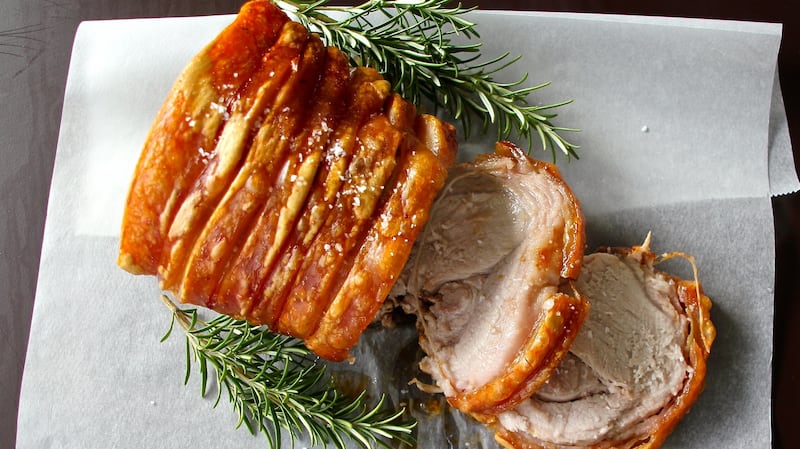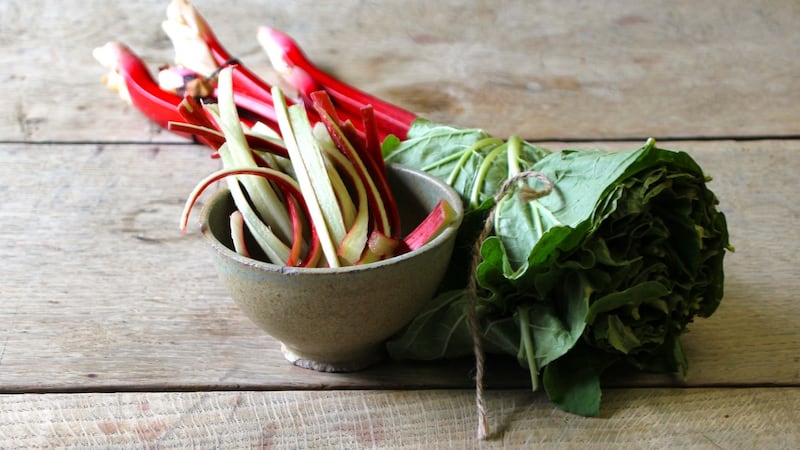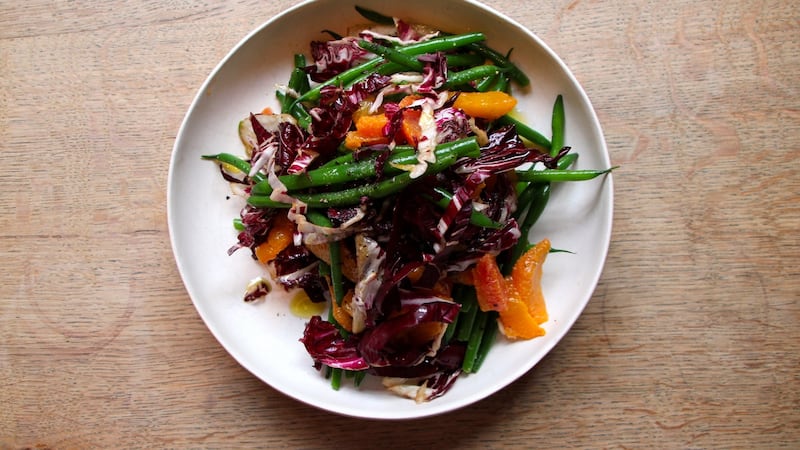Checking the bookings for St Valentine's Day in the restaurant always makes me think of Noah's Ark: it's all tables of two. I love working on Valentine's Day, even if I'm not really into it myself. Growing up in New Zealand, I think the day came into fashion in the early 1980s and it was seen very much as an American invention. I never saw my dad freaking out and rushing to buy red roses or anything. That kind of stuff only happened in movies.
When I asked a few of my chef pals “what do you reckon is something romantic to cook?”, most of them answered steak. The really lazy ones said an M&S meal for two, but just for one. Nailing half a Romantica by yourself also came high up on the list. In fairness, it is more than just a frozen dessert from the supermarket. They have a point. I mean, what’s better: the biscuit, the caramel or the chocolate balls on top?
So here are my own top tips for the perfect Valentine’s Day. First of all, romantic is very different from sexy. Please don’t ever get these two things mixed up. Also, never buy chocolate body paint: it always comes in far too small a tub, and I really don’t think it’s even chocolate.
For the ideal romantic meal, you will need a Leon Bridges soundtrack, roast pork, amazing pink fir apple potatoes from Ballymakenny Farm, a tasty salad and a little lemon posset. Follow this with a dark Scandinavian drama such as Deadwind, a bottle of Barolo and a Valentine's Day pack of chocolate from Bean and Goose. All this while clad in unicorn PJs and slipper socks or red satin nightgown with diamante trim – whatever you're into yourself; no judgment here.
It’s not all about the couples, though. I work with a lot of single folk, and generally at work we treat ourselves to a little Valentine’s preservice chocolate treat from Mike’s shop across the road. So far this year the firm favourite is the Starbar. That’s how we do romance on Sea Road.
PORCHETTA WITH PICKLED RHUBARB

When you’re cooking porchetta – an Italian treatment for rolled pork – you need a wide enough piece to make the roll, so if you’re just feeding two people – as with this recipe – then you can cut it once it’s rolled and freeze half for another time.
A true porchetta is made from whole suckling pig cooked over a pit until tender. I don’t know about you, but I don’t have a pit - so let’s do it this way. The crisp, crackling skin is the perfect centrepiece for a special-occasional meal. You might have to sweet talk your butcher, as finding skin-on pork can be difficult. The butcher can roll it for you or you can do yourself.

Ingredients
For the porchetta
3kg free-roam pork with the skin attached (belly or shoulder meat are good)
A good rub of sea salt and white pepper
A sprinkling of rosemary or dried oregano and thyme
For the quick pickled rhubarb
200ml apple cider vinegar
75g muscovado sugar
1 star anise
3 pods of cardamom
20g dried rose petals
4 sticks of rhubarb, cut into 1cm rounds, or thin strips
Method
Give the pork a good rub down with the seasoning and herbs. Then roll it tightly, tying with butcher’s string every few centimetres. Dry the skin out by leaving the joint uncovered in the fridge overnight.
Take the meat out of the fridge three hours before you want to cook it.
Preheat your oven to 250C.
Place the porchetta in the oven for 30 mins then reduce the temperature to 170C and cook for a further two hours or until the juices run clear. Wrap in foil and leave to rest for another 30 mins.
While the porchetta is cooking, make the pickled rhubarb by combining the vinegar, sugar and spices and place in a deep saucepan.
Put the saucepan on the heat and bring to the boil. Once boiling, pour over the rhubarb. Cover and set aside.
After 10 mins this should be tart and sweet providing the lovely balance you need to cut through the richness of the pork.
GREEN BEANS, BLOOD ORANGE AND RADICCHIO

This is a great winter salad featuring blood oranges and balsamic vinegar. Mixing sweet and savoury, the flavours in this salad are fresh and bright. Blood oranges lend themselves really well to salads: their acidic quality perfectly balances the leaves, and a hit of good balsamic vinegar adds a hint of sweetness.
Ingredients
200g fine green beans
2 blood oranges
1 head of radicchio, torn
30g lovage, chopped
20g mint, torn
50g flat leaf parsley, roughly chopped
50ml olive oil
30ml good aged vinegar (try to find Wild Wood)
Method
Bring a pan of lightly salted water to the boil. Add the beans and cook for two to three minutes until firm to the bite. Allow to cool a little.
Peel the blood oranges and cut them into segments.
Toss the beans, oranges and all the other ingredients together in a large bowl. Serve as soon as possible.
PERFECT LEMON POSSET

A posset is a medieval drink that has made a comeback in recent times as a set dessert. It is velvety smooth and refreshing. You can top it with fresh berries, toasted flaked almonds or some pared lemon zest if you want to be fancy. These are best served with buttery Kilbeggan oat cookies, but shortbread makes a good alternative.
Ingredients
550ml double cream
130g golden caster sugar
2 lemons, zest and juice
Method
Put the cream in a saucepan with the sugar and gently heat, stirring vigilantly, until the sugar has melted. Be careful as this can boil over very quickly.
Bring slowly to the boil and simmer for five minutes. Stir in the lemon zest and juice.
Turn off the heat and divide between pots, ramekins or glasses and cool to room temperature.
Carefully cover and chill for at least three hours, or for up to 24 hours.











